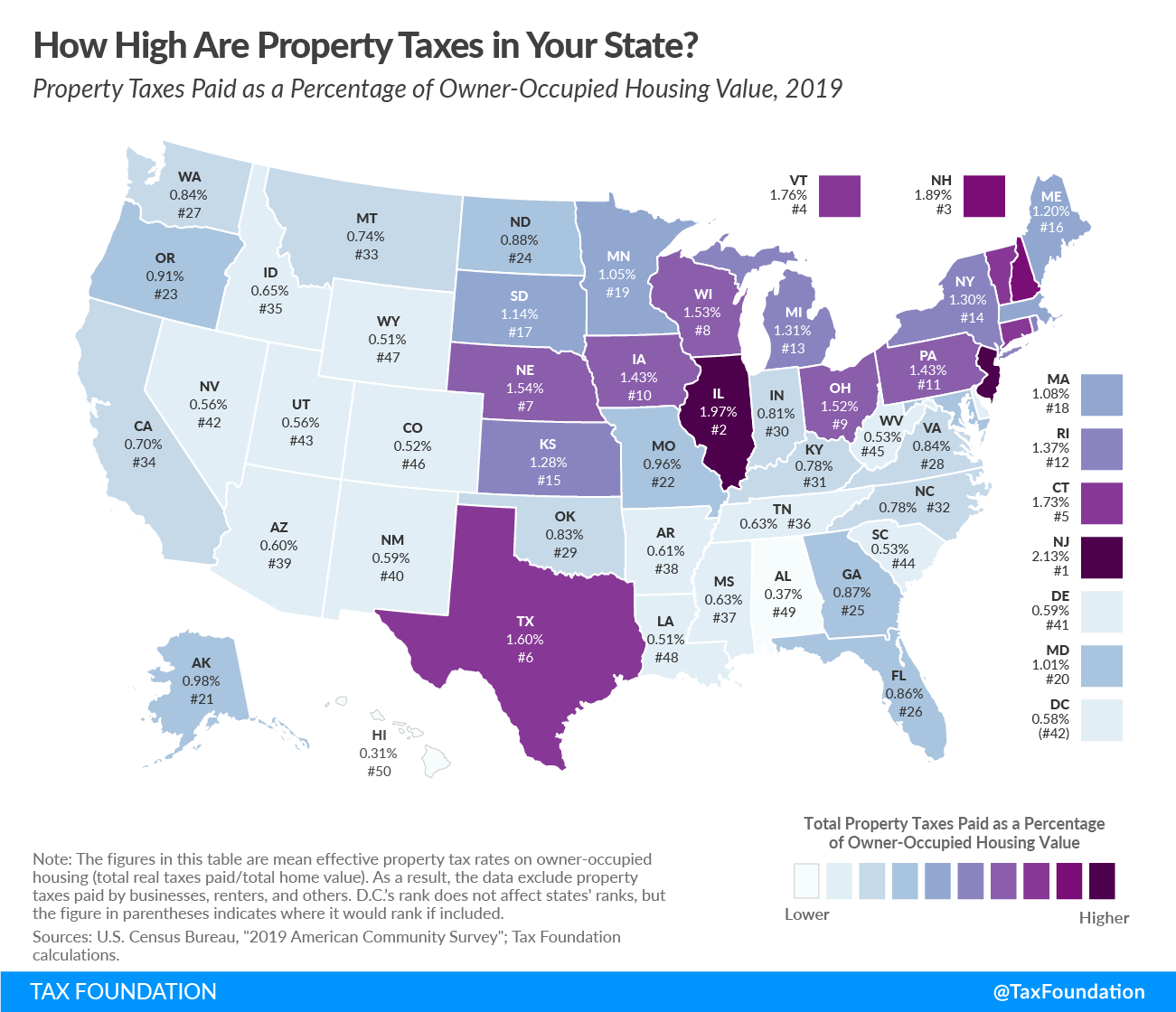Today’s map focuses on states’ effective taxA tax is a mandatory payment or charge collected by local, state, and national governments from individuals or businesses to cover the costs of general government services, goods, and activities. rates on owner-occupied housing. This is the average amount of residential property taxes actually paid, expressed as a percentage of home value.
Because property taxes are tied to housing values, it makes sense that the actual dollar amounts of property taxes tend to be higher in places with higher housing prices. This map takes housing value into account to give a broader perspective for property taxA property tax is primarily levied on immovable property like land and buildings, as well as on tangible personal property that is movable, like vehicles and equipment. Property taxes are the single largest source of state and local revenue in the U.S. and help fund schools, roads, police, and other services. comparison.
Governments tax real property in a variety of ways: some impose a rate or a millage—the amount of tax per thousand dollars of value—on the fair market value of the property, while others impose it on some percentage (the assessment ratio) of the market value. While values are often determined by comparable sales, jurisdictions also vary in how they calculate assessed values. While property taxes tend to be imposed at the local level, the basic framework for how they are imposed is typically set by state law.
Some states have equalization requirements, ensuring uniformity across the state. Sometimes property tax limitations exist which restrict the degree to which one’s property taxes can rise in a given year, and sometimes rate adjustments are mandated after assessments to ensure uniformity or maintenance of revenues. Abatements are often available to certain taxpayers, like veterans or senior citizens. And of course, property tax rates are set by political subdivisions at a variety of levels: not only by cities and counties, but often also by school boards, fire departments, and utility commissions.
Some states with high property taxes, like New Hampshire and Texas, rely heavily on them in lieu of other major tax categories. This often involves greater devolution of authority to local governments, which are responsible for more government services than they are in states with greater reliance on state-level revenues. Other states, like New Jersey and Illinois, impose high property taxes alongside high rates in the other major tax categories.
In calendar year 2019 (the most recent data available), New Jersey had the highest effective rate on owner-occupied property at 2.13 percent, followed by Illinois (1.97 percent) and New Hampshire (1.89 percent). Hawaii was at the other end of the spectrum with the lowest effective rate of 0.31 percent, followed closely by Alabama (0.37 percent) and Louisiana and Wyoming (both at 0.51 percent).
How does your state compare?
Stay informed on the tax policies impacting you.
Subscribe to get insights from our trusted experts delivered straight to your inbox.
Subscribe